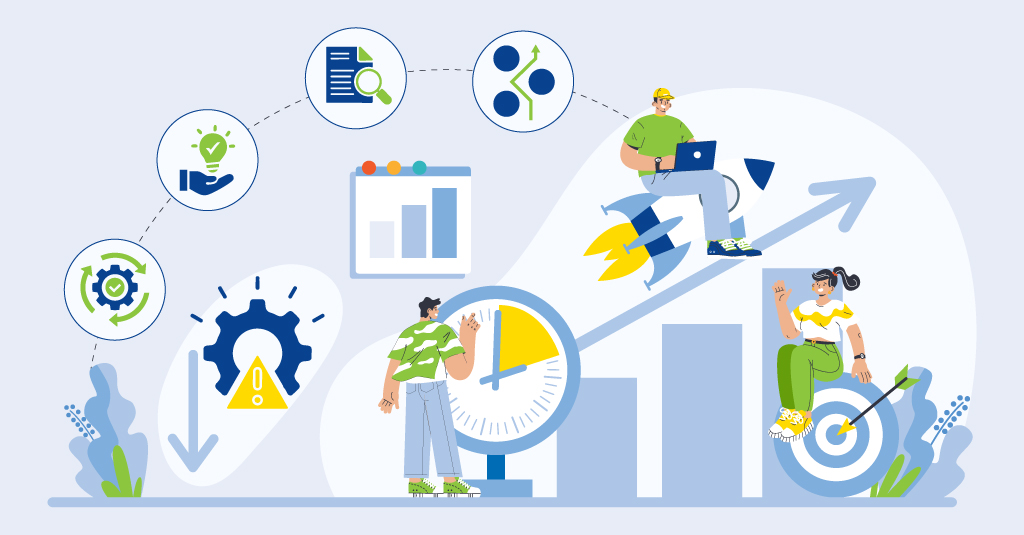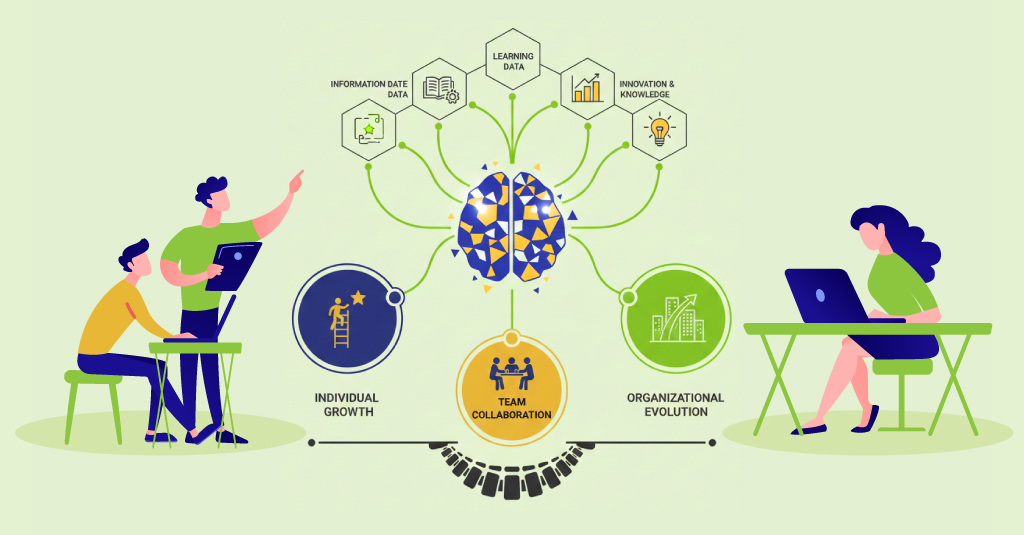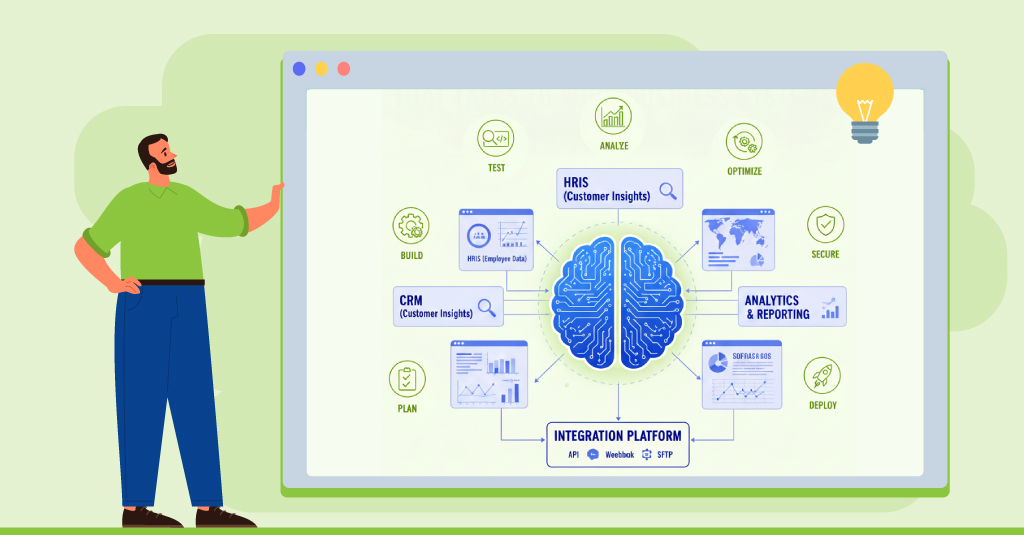In industrial manufacturing environments, even minor or short-term disregards for safety awareness can have a cascade of operational consequences, such as harm, regulatory attention, asset downtime, and even production halts. Production is also adversely affected when employees are unable to adapt to modifications in procedures or improvements in equipment.
The pace and unpredictability of the shop floor are not matched by the majority of traditional safety training, which is lecture-based, heavily paper-based, or too general. Precision, scalable, contextual, behaviorally anchored learning that complements rather than disrupts work, is what manufacturers require.
This is where eLearning, designed through the lens of cognitive science and instructional integrity, becomes not just viable, but strategic.

Safety and Productivity Are Not Competing Priorities, They're Interdependent
It is erroneous to assume that throughput and safety are mutually exclusive. In terms of quality, efficiency, and uptime, organizations with a high level of safety maturity frequently perform better than their counterparts. Why? Because employees who are psychologically comfortable perform more confidently, make fewer mistakes, and follow procedures more consistently.
Safety isn’t the cost of doing business, it’s the foundation of high-performance environments.
Consider the following operational realities:
-
Safety incidents frequently result from knowledge decay or procedural drift, not negligence.
-
Incremental process updates from software tweaks to equipment retrofits require rapid skill acquisition at scale.
-
Training methods for technicians and line workers must take into account their linguistic requirements, shift-based availability, and differing reading levels.
By reaching learners where they are in terms of cognition, language, and functioning, eLearning takes into account these realities.

The Friction in Traditional Models
Despite their ubiquity, legacy safety training methods often fail under operational scrutiny:
-
Training that is event-based (such as yearly sessions) lacks reinforcement and causes forgetting curves in a matter of weeks.
-
One-size-fits-all knowledge ignores equipment variations, work variability, and SOPs unique to a given institution.
-
Paper-based documentation is rarely in line with behavioral transfer, is static, and is difficult to retrieve in real time.
-
Post-event retraining is frequently reactive and lacks systemic understanding of underlying issues or skill deficiencies.
More critically, many programs fail to leverage instructional design models that anchor learning to actual on-the-job behavior. They assume awareness equals readiness; it doesn’t.

The Solution: eLearning as an Embedded Operational Capability
High-impact eLearning doesn’t replace safety protocols, it operationalizes them. It translates policies into behavior, procedures into fluency, and compliance into culture.
Here’s how evidence-based eLearning reduces incidents and accelerates productivity:
1. Simulated, High-Fidelity Learning Reduces Risk
Using scenario-based simulations, workers engage with realistic challenges in a no-fail environment. From virtual lockout/tagout procedures to interactive HAZOP diagnostics, simulations improve procedural fluency, not just recall.
-
Apply Merrill’s First Principles to center modules on real-world problems with immediate relevance
-
Include branching scenarios that replicate floor decision points.
Example: After implementing a torque calibration simulator as part of their eLearning program, a Tier 1 automotive supplier was able to minimize inappropriate torque application mistakes by 43 percent.
2. Microlearning Enables Just-in-Time Safety Precision
Procedure reinforcement is supported by brief, targeted information bursts that don’t interfere with operations, such as interactive task aids or 2-minute video reminders.
-
Put safety procedures into long-term memory by using retrieval practice and spaced repetition.
-
Deliver via mobile devices, QR codes on machinery, or embedded LMS widgets.
Example: Maintenance technicians at a semiconductor plant used micro-modules accessed via QR stickers at each machine, leading to a 37% reduction in rework.
3. Analytics Enable Predictive Coaching and Compliance
Modern LMS platforms integrate with operational systems to correlate training outcomes with incident data, downtime, and productivity metrics.
-
Track individual skill acquisition against production KPIs.
-
Trigger reinforcement modules automatically after near-miss reports or SOP changes.
Example: A food processing facility linked training scores to shift performance data, identifying that low retention on allergen control protocols correlated with a spike in cross-contamination risk.
Discover how custom eLearning solutions can build this integration.
4. Inclusive Design Ensures Equitable Access
From cognitive diversity to multilingual accessibility, effective eLearning must accommodate all learners.
-
Include WCAG-aligned UX, voiceovers, language toggles, and modular content for varied literacy levels.
-
Use Dual Coding Theory visuals + audio to increase comprehension, especially for ESL workers.
Case in point: A packaging manufacturer saw a 21% increase in compliance quiz scores after translating modules into Tagalog and Spanish, paired with audio narration.

Case Insight: Digitizing Safety Across Five Plants
A multinational automotive OEM collaborated with Upside Learning to redesign its safety training across five North American sites. The objective? Reduce incident rates and standardize onboarding across variable equipment and languages.
Challenges:
-
Incident clusters among contingent workers.
-
High onboarding time-to-floor.
-
Inconsistent supervisor coaching across shifts.
Solution:
-
Developed interactive, site-specific modules using Gagné’s 9 Events framework.
-
Integrated QR-based refresher access on shop floor stations.
-
Deployed multilingual, mobile-optimized microlearning bursts tied to equipment tags.
Results:
-
27% drop in incidents (year-over-year).
-
40% reduction in training time.
-
Supervisor satisfaction with onboarding rose by 3.5 points on internal NPS.
Review more case studies here.

Instructional Takeaways for L&D Architects
To build eLearning that doesn’t just inform, but transforms, apply the following:
- Conduct a risk-task matrix. Map your highest-risk tasks to specific learning objectives using Bloom’s Taxonomy for outcome clarity.
- Design for workflow integration. Learning should not take place outside of work, but rather within it.
- Turn from reactive to proactive by using performance data to initiate learning interventions.
- Personalize the experience. Use LMS branching logic or AI to tailor modules by role, site, or risk profile.
- Treat reinforcement as non-negotiable. Build drip campaigns, performance nudges, and post-incident microlearning.

Pitfalls to Avoid
Avoid these common errors when deploying digital safety learning:
-
Overloading modules with text-heavy content. Brevity and clarity are essential.
-
Ignoring context. Generic off-the-shelf videos alienate rather than engage.
-
No spaced reinforcement. Without repetition, most safety learning decays within 30 days.

Conclusion: Safety Training Is Operational Strategy
Effective eLearning in manufacturing isn’t just about compliance, it’s about behavior change, systems thinking, and enabling safe, efficient operations at scale.
Training is not an event. It’s a continuous capability.
Want to discuss how Upside Learning can help transform your safety training ecosystem?
Talk to our experts or explore our custom eLearning for manufacturing capabilities.
FAQs: Custom vs. Off-the-Shelf eLearning
If your workflows, tools, or brand vibe are one-of-a-kind- or if behavior change matters- custom’s your cheat code.
Yep, upfront it’s lighter on the wallet. But for long-term wins and role-specific skills? Custom flexes harder ROI.
For sure. Start with off-the-shelf for the basics, then sprinkle in custom modules where it really counts.
Depends on how ambitious you get- usually weeks to months. Planning ahead keeps you from sweating deadlines.
For general topics, yeah. For real-life scenarios or changing habits? Engagement can ghost you.
Totally. You own the content, so edits, tweaks, or upgrades? All yours.
Custom can adapt paths, toss in interactive exercises, and mix multimedia to match every brain type.
Mostly basic stuff- completion rates, quiz scores. Custom digs deeper: behavior, skill gaps, all the good analytics.
Quick wins? Off-the-shelf. Lasting change? Custom. Pick your lane- or flex both.
Yep. They make it seamless- fast deployment, tailored experiences, or a mashup.

Pick Smart, Train Better
Picking off-the-shelf or custom eLearning? Don’t stress. It’s really about your team, your goals, and the impact you want. Quick wins? Off-the-shelf has you covered. Role-specific skills or behavior change? Custom eLearning is your move.
Upside Learning makes both options effortless. Whether it’s ready-to-roll courses or fully tailored experiences, we handle the heavy lifting- interactive modules, adaptive paths, branded visuals, and analytics that tell you something. No wasted time, no generic content- just learning that sticks.
Ready to level up your team’s learning game? Connect with Upside Learning today and see how we make training fast, engaging, and results-driven. Your team deserves training that works- and we deliver.


















